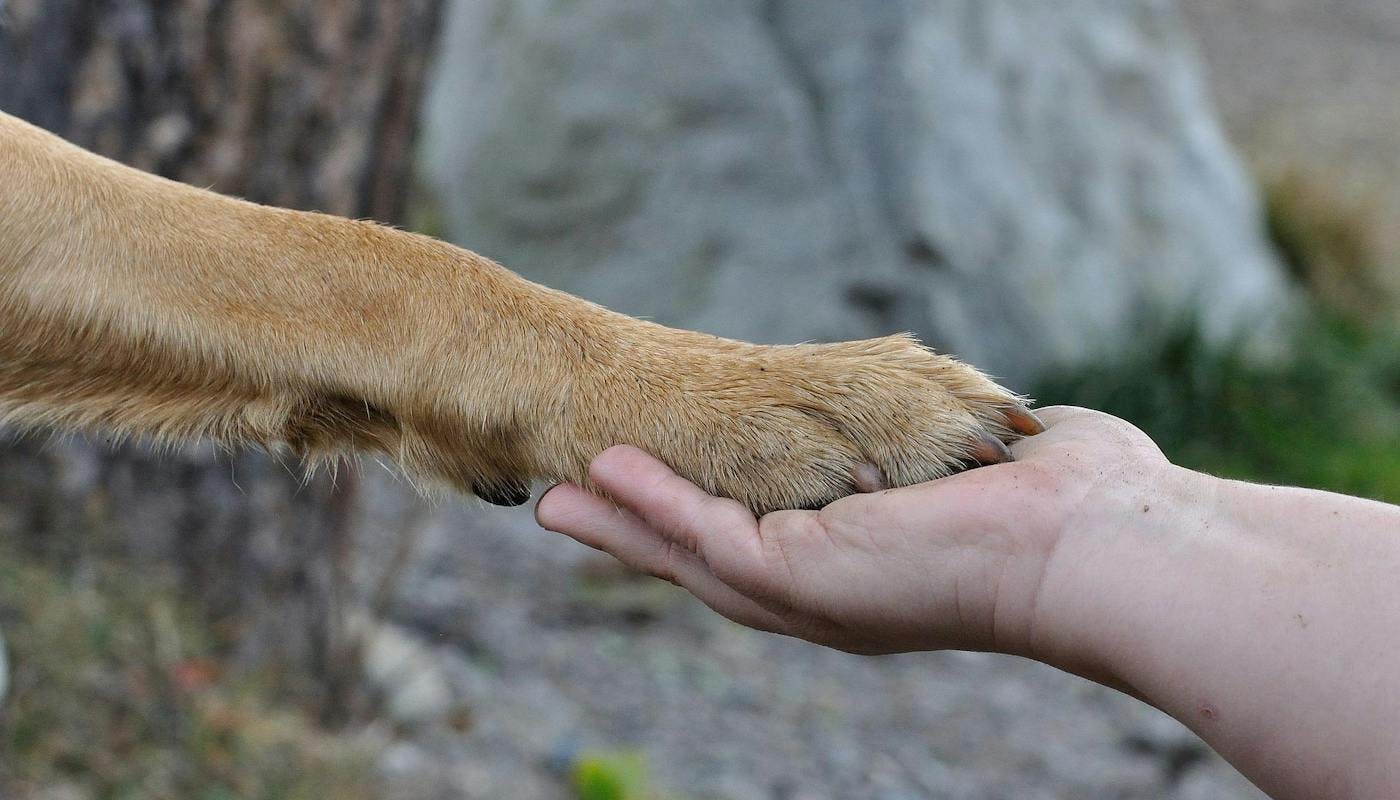What Is Keratoma? Guide to Treating Dog Corns
If your dog’s walking with a limp, check their leg and paw carefully. They’ll likely flinch when you locate the cause. If it’s an injury to something like a tendon then it will be easy to feel, but if the limp is caused by their paw then it could be a corn – they’re not uncommon in dogs. We’ll look at causes and treatment in our Guide to Corns…
What Is A Canine Keratoma?
A keratoma appears when there is abnormal tissue growth beneath the surface of a dog’s paw. It is made up of keratin and feels tough, like scar tissue.
You might see a keratoma referred to as a ‘foot tumour’, ‘callus’ or simply a corn. It is typically benign (non-cancerous) and similar to the calluses that people get on their feet.
It can cause discomfort or pain when your dog walks, so the first symptom you’ll notice will probably be a bit of a limp.
Corns can also form around a dog’s nose, particularly in breeds like Labradors, Mastiffs, some Terriers, and Golden Retrievers.
What Causes A Keratoma?
Common in horses and certain breeds like Greyhounds and sight-hounds, corns are often caused by a trauma to the foot. This could be abrasion (due to sprinting) or a foreign body piercing the foot. The scar tissue builds up into a mound which can keep growing.
Some dogs suffer from Hyperkeratosis, which is simply the overproduction of keratin. Keratin is a natural component of skin and hair, but too much of it makes skin thick and hard. Hyperkeratosis can affect dogs’ noses as well as paws and can be managed with regular use of an emollient (topical balm).
Corns can also be caused by a lack of zinc in the dog’s diet, or an underlying auto-immune skin disease. So it’s vital to consult your vet and rule out these problems.
If a keratoma is undiagnosed, it can also crack or become infected, which will be very painful.
Symptoms of Keratoma
Here’s what to look out for:
- Lameness. When your dog has a corn, the first thing they’ll do is take the weight off it – so you might notice them shifting their weight to other legs when they walk around.
- Swelling. A corn looks like a small swelling on the paw. It will gradually harden and may crust over or split.
- Longer claws on the affected paw. If the dog has stopped using one paw, their nails or claws will grow longer on that foot.
- Infection. If the corn has been present for a while and has not been treated, it can become infected – this will have an unpleasant appearance and you should report straight to your veterinarian.
Treating Keratoma (Corns) in Dogs
At the moment, there isn’t much research into treatment for corns, so your vet is best-placed to advise you based on their experience.
- Topical treatments. Your vet may recommend a Keratolytic medication (which breaks down built-up keratin), an emollient (to soften the corn) or a caustic agent (which destroys the tissue). You may need to continue using a topical treatment after the corn has decreased, particularly if your dog is suspected to have chronic hyperkeratosis.
- Surgical removal. The corn can be removed by your vet using a surgical scalpel or laser.
- Filing down the corn. This is done little and often, and your vet will probably suggest fitting a boot to prevent regrowth.
- Hulling the corn. This involves removing the central core.
- Injecting silicone beneath the corn. This method has produced good results for humans and is currently being tested for dogs.
If you are keen to avoid surgery and your vet consents, you could try some of the following:
- Homoeopathy. Homoeopaths have reported success with tablets and ointment.
- Epsom Salts. Dissolve in water and soak your dog’s paws (or soak a dressing and wrap it around them) twice a day..
- Boots. In conjunction with treatment you can use ‘paw’ boots which help your dog to walk comfortably.
After corn removal, your dog will need special treatment (and plenty of affection, naturally).
- Your vet will probably apply a pressure-relieving bandage. They may also use a veterinary low-level laser, which delivers a non-invasive light to stimulate healing. This is usually delivered over several sessions but can have good results after just one.
- Supplementary Vitamin A can help (and might be recommended, depending on their diagnosis). It regulates cell build-up and is often used to help skin conditions.
- To prevent recurring corns, you can use a skin conditioning treatment on your dog’s paws. Look for ingredients like shea butter and Vitamin E – they have great moisturizing properties. Dermoscent Bio Balm has been shown to deliver good results for this.
Try our Supplements to Improve Movement and Skin…
Researching your concerns on the internet is a good start. But our articles are written to give you an overview – not medical advice. If you think there’s a corn on your dog’s foot, go directly to your veterinarian. Think there are underlying issues with your dog’s nutrient balance or joint movements? You could try adding a supplement to their diet. That’s where we come in! Soothe/products/soothe is a blend of ingredients proven to support the immune system and skin. Reviewers report that it prevents itchy and sore bits, promoting healthy skin.
